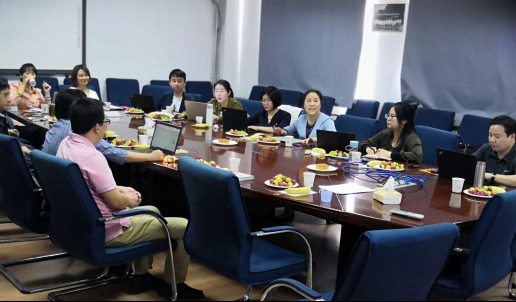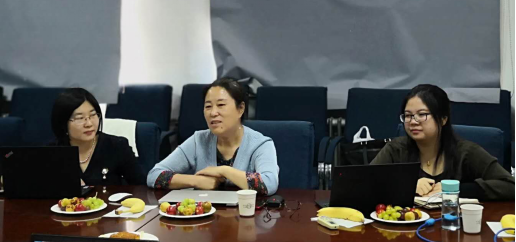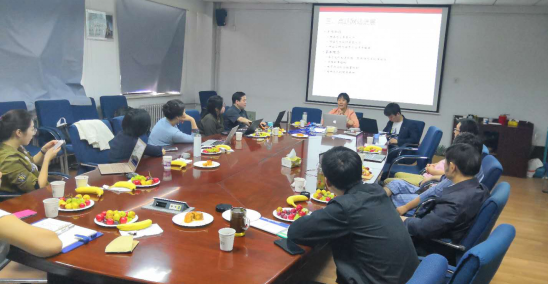
Sep . 04, 2018
On September 23, the mid-term meeting of the 2016 National Social Science Fund Project “Digital Protection and Inheritance of Historical Villages: Theory, Method and Application (16ZDA158)” was held in Room 209 of SIRM. Prof. Huiling Feng, the chief expert of the project, hosted the meeting. The attendees includes facilitors of sub-projects, i.e., Yang Luo, Jihong Liang and Linqing Ma; the core researchers, i.e., Yongjun Xu, Li Niu, Xiaoshuang Jia, Zhenyuan Zhu, Lichao Liu, Shuo Zhang, Kai Zhang, and research assistants. The main agenda of the mid-term meeting of this project was: (1) the research progress report; (2) the internal review of the findings of No.5 sub-project “Pilot Experiment: Digital Protection and Inheritance of Gaoqian Ancient Village”.

Prof. Feng introduced the research progress and mid-term findings. Firstly, she praised on the hard work and contributions of the research members. Secondly, she reviewed the progress of each sub-topic, and clarified the future work. Then, she talked about the main problems and challenges in the research, and proposed several improvement measures. Finally, Prof. Feng emphasized the key time nodes of the project and encouraged researchers to work together to fulfill the research goals.

Associate Professor Liang, the facilitor of the No. 5sub-project, introduced the progress and research findings of Gaoqian case. First of all, she explained the theoretical basis of the digital protection and inheritance of historical and cultural villages from the perspectives of cultural heritage protection trends and concepts, social memory theory, etc., and proposed that the digital protection and inheritance of ancient villages should take into account the sense of history and consensus. Secondly, she reported on the progress of the resource library and Gaoqian website construction, saying that the current historical and cultural villages and towns digital resource library metadata and platform construction is basically completed, and the data is gradually entered. At the same time, the Gaoqian website content and art design have been basically completed, and the website implementation and webpage content have been gradually edited. Finally, the participants made a discussion on the Gaoqian website and offered suggestions.

The meeting served as a conjunction between the preceding and the following, which not only summarizes the research results and experiences of existing projects, but also clarified the direction of future work.
- Faculty from the School of Information Resource Management attended 2023 Annual Meeting of the International Electrotechnical Commission’s Smart City System Committee
- Faculty and Students of the School of Information Resources Management participate in the 2023 ICA International Congress on Archives
- The 20th China Information Resources Management Forum and the Inaugural Meeting of the Autonomous Knowledge System Alliance for Information Resources Management Discipline in China were successfully held
- Faculty and students of the School of Information Resource Management participated in iConference 2023
- The international publication of papers from the School of Information Resource Management (SIRM) at Renmin University of China, by teachers and students since June 2022
- Dr. Liang Jihong Lectured Online in Special Training Camp Series of Digital Memory
- Symposium on Community Informatics (CI) in Digital China was held by SIRM
- Associate Professor Rony Medaglia from Copenhagen Business School Gave A Cutting Edge Lecture: Digital Transformation in Government
- “Digital Memory” Beijing Nursery Rhyme Group was elected as the Outstanding Team of “Historical Town, Traditional Business, Celebrities, Scenaries Presevation Cooperation Programme” in Xicheng District in 2018
- Board Chairman of “digital project” gave advice to the students pioneering business


